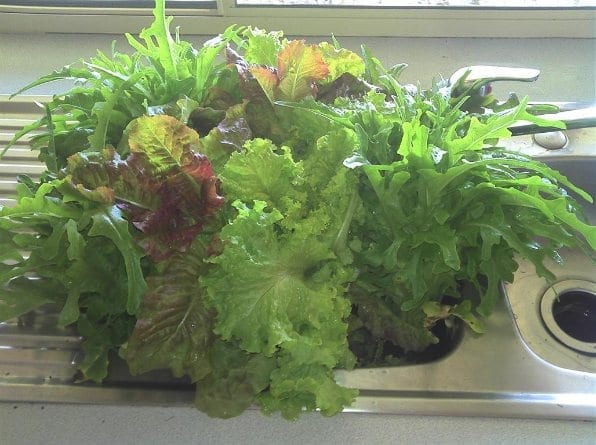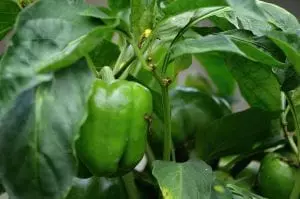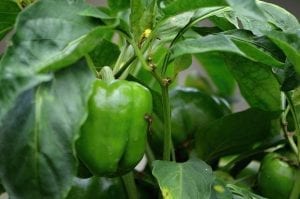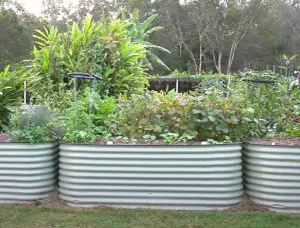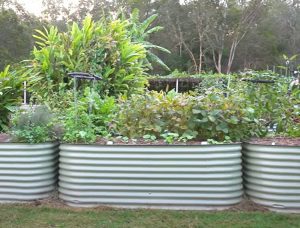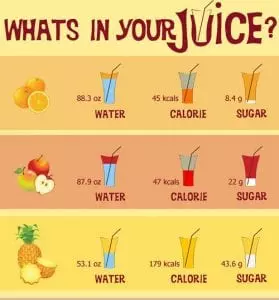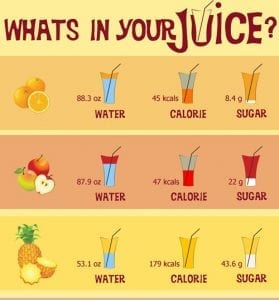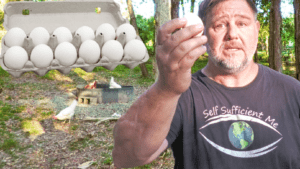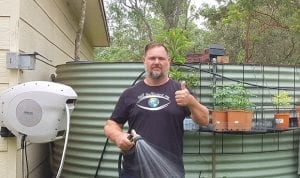*This article was revised in Dec 2012, and contains sponsored links.
Lettuce is one of those common salad vegetables, which most of us take for granted as one of those regular foods in our diet we just always have and don't need to think about much. But, we should think about lettuce more because what if we didn't have lettuce? A world without lettuce would be a world without caesar, Greek, French, or Italian salads for a start. And, Mexican Tacos would be a miss along with prawn cocktails in the 70's & 80's, timeless egg sandwiches, subway rolls, and what else would we use as a clever makeshift cup for cooked mince at parties? Ok, cabbage, but it's still not the same…
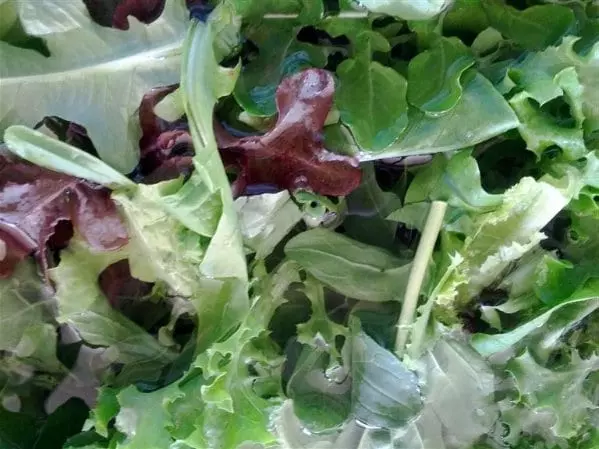
(Image above) Loose Leaf Lettuce Mix
When you think about it, lettuce is vital to humanity! And although it's relatively easy to grow not many people do grow their own lettuce, which is a shame because there are many benefits in growing this salad vegetable at home.
Observations
When I started f
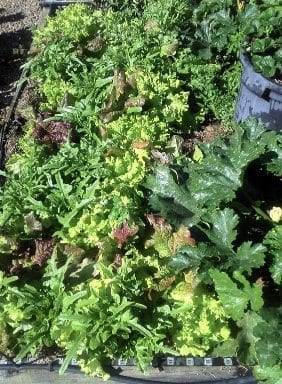
Taste
We must start at taste (since to eat, is why lettuce is grown) and in my opinion lettuce on its own is pretty ordinary, but, zhuzh it up with some balsamic vinegar and quality extra virgin olive oil and I'm hogging the salad bowl. Lettuce is the background singer whose accompanying vocals make the song great but they never get the fame, and without lettuce many well known dishes/recipes wouldn't taste as good or complete.
Having said that, lettuce isn't bland either and can range in taste from crisp water to bitter quinine. My Italian Uncle (Guido) used to enjoy the (almost thorny) curly leafed Italian lettuce tossed with red wine vinegar and olive oil. His lettuce was the most bitter I've ever tasted and (after a few months of living with Guido) it tasted great!
What's in Lettuce?
This innocuous vegetable is packed with goodies to help keep us healthy. To name a few: vitamin A; C; K; foliate; Iron; calcium; magnesium; potassium; dietary fibre; and antioxidants (purple coloured varieties are especially good).
Appearance
Lettuce looks great in the garden and can be quite an ornamental plant. I've seen gardeners use lettuce in their formal ornamental garden beds scattering lettuce in and around filling spaces between flowers and it looks terrific! I wish I could show you a picture but I'd get “done” for copyright…
In vegetable gardens, developing lettuce always looks nice and used as a boarder lettuce can add an ornamental touch to the patch framing the other vegetables within. The different colours and shapes also gives an interesting look in the vegetable patch if you decide to grow a mix of lettuce varieties.
(Image Below) Lettuce Border Raised Bed at Play Gym

Types of lettuce
There are hundreds of different varieties of lettuce; however, they do tend to fall into two major groups hearted varieties like: iceburg, cos, buttercrunch, and loose varieties like: oak-leaf, curly leaf, and red speckled.
Generally, the loose leafed varieties are faster and easier to grow than the hearted varieties.
(Image Below) This Buttercrunch grew on its own on my lawn – self sown

Growing Conditions
Prefers a temperature range of between 5 – 25 degrees Celsius and may bolt (go to seed quickly) in temps below or above that range.
Lettuce does like lots of water and if water is an issue in your area, along with cutting down on energy bills, a great way to help conserve water, and cut down on your bill is to use a flow meter. Although lettuce does like a "drink," it also needs well-draining but damp, fertile soil with plenty of mulching. That's why lettuce grows well hydroponically, and in light sandy soils (with the right nutrients) because as long as there is plenty of water a loose soil medium isn't an issue.
Full sun is the best aspect; however, lettuce will do fine in dappled shade too, and the shade may actually help with bolting due to heat (as described below – under bolting).
I usually sprinkle a little lime or dolomite around before planting as the extra calcium seems to help produce strong leaf growth, although, if your soil is pretty fertile it may not need any extra additions at all to get really good results. Some soluble fertiliser or seaweed solution occasionally tends to give lettuce a nice boost if you feel growth is lacking.
Seedlings/propagation
I mostly sow lettuce seed directly to where it is to grow. This can be done by sprinkling the seed in rows on newly tilled soil or seed raising mix and then lightly dusting over the top with a thin layer of soil/seed raising mix. Lettuce seed does not need to be buried too deep (if at all) to germinate and just keeping the soil moist is usually good enough to begin sprouting in a few days.
(Image Below) Seedlings emerging after being directly sown in the garden 
When the seedlings are a few inches high thin them out about two finger widths apart and about 10 days later thin the more mature seedlings out again giving about 25cm/10 inch between plants. Use the thinned plants to make another row or fill bare spaces.
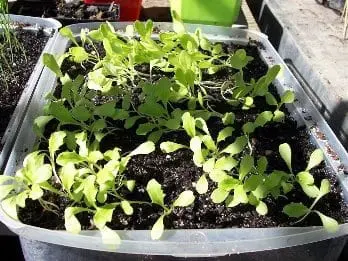
If sowing direct is problematic then sowing in punnets or trays is an easier way to ensure success. Sow a few per space or scatter in a tray, keep in a controlled environment (like green house) and then thin out to one (if in small punnets). Planting can be done when the seedling has several leaves and good root development and then water regularly for at least the first week until established.
Disease and pest resistance
I've always found lettuce one of the least vegetables requiring attention in the garden due to bugs or disease. And, if my lettuce did get attacked it could usually be attained to weak growth from a physical problem (like nutrition) causing the plant to become a target for pests or disease.Occasional aphid outbreaks can happen but in small numbers they don't do much damage and are simply washed off with water prior to eating.
Snails and slugs can be a problem at the seedling emergence stage by eating the top clean-off and killing the plant; also, heart forming varieties can be damaged badly by the slugs getting into the centre of the leaves. Control is easy if you don't mind sprinkling around some snail pellets when you see signs of activity or just pick them off by hand if you can find them.
Overall, lettuce would have to be one of the best vegetables to grow organically due to it's disease and pest resistance.
Grows fast
Sometimes I find my lettuce crop growing much faster than I'm able to use it. Initially, seedlings may take awhile to establish; however, once lettuce has a foot-hold it can grow quite rapidly with some loose leafed varieties fully grown in 8 weeks and hearted varieties in 12 weeks.
Practically, a crop of loose leafed lettuce at home is usually harvested after only a few weeks of growing by breaking-off a couple of leaves per plant to gain enough for a mixed salad when required. By leaving the odd lettuce to grow unpicked, I usually have one or two lettuces fully intact to give away to friends or family when the opportunity arises.
Bolting
Bolting is lettuce going-to-seed earlier than expected and this tends to happen when its grown out of the tolerant temperature range.

(Image above) Lettuce going to seed
Once lettuce goes into seed producing mode it shoots up a strong leader from the centre of the plant and puts all it's energy into producing the flowers and seed pods. Because of this, the leaves become nutrient and energy depleted giving them an unpleasant bitterness, which is edible but doesn't make for an ideal salad (for humans anyway).
If you live in a climate with extreme temps and you wish to grow lettuce most of the year then bolting is just something to get used to and manage. This can be done by:
-
Staggering crops more closely – Through summer in my region (sub-tropical) I stagger my crops of lettuce only a few weeks apart (a little more often). In the middle of summer, we pretty much eat juvenile lettuce because most plants hardly get anywhere near mature before bolting. Therefore, “baby lettuce” it is and that means constant sowing to produce new lettuce. Once the lettuce bolts it's out and replaced by a new plant.
-
Growing in part-shade – I have a part shaded spot in my garden specifically for growing annual vegetables susceptible to the heat. Under dappled shade, lettuce may hang-on just a little longer before bolting because there isn't the direct sunlight on the plant and the dappled shade temperature is lower, the soil stays cooler, and water retention is better. Leaf growth can be slower under part shade and be slightly blanched but eating quality is still good.
-
Growing slow bolt varieties – If you can get hold of a commercial variety claiming slow bolt qualities then it might be worth trying. Generally, loose leaf varieties are better than heart-forming ones and out of the loose leaf I think the broader leaf varieties are slower to bolt than the curly or frilly leaf ones.
-
Watering system – Ensuring lettuce has regular water is important in hot climates and an overhead watering system timed to come on twice a day for just a few minutes helps greatly.
(Image below) Lettuce seedlings in part shade with cabbage

Keeps well after picking
Fresh lettuce cut from the garden washed and stored in the fridge crisper will keep well for several days. In hot weather, try to gather lettuce in the morning before the heat of the day as the lettuce leaves will be fully hydrated in the morning and then loose moisture throughout the day. Nevertheless, if lettuce does have to be picked in the middle of the day you can place the leaves in cold water for about 15 minutes and this does help to rehydrate the leaves a little.
Collect seed
Leaving some of your favourite lettuce plants go-to-seed is one of the cheapest and easiest way to obtain seed for your next crop. Lettuces self-pollinate so they will be true to type when you re-sow the seed from the parent plant.
Once the plants go to seed they need little care and I usually just forget about them until they dry off and show fluffy white endings as the seed pods open – this usually takes about two months. The flowering lettuce also brings lots of bees to the garden, which helps the bees and pollination of other plants in the garden.

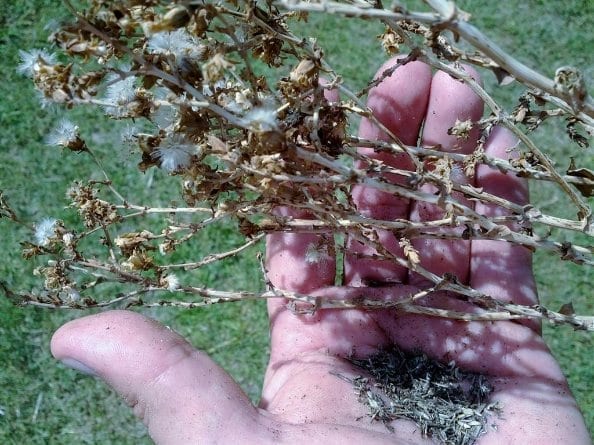
(Image above) Saved lettuce seed
Each lettuce plant will produce thousands of seeds and collecting them is easy by either breaking off each pod when dead and dry and storing them whole or by lightly pressing/rubbing the pods to let the seed sprinkle out into a container. Store the seed in a cool dry place.
Surplus
Because of it's fast, easy growth and the ability to squeeze lots of plants into a small space an over abundance of lettuce happens from time to time. Also, if your are using loose leafed varieties and the “few leafs from each aka mixed-salad” technique, eventually the plants will grow to maturity and then go to seed. You only need a few seeding plants to make enough seed for next sowing and lettuce doesn't preserve well so with the remainder you can:
-
Feed surplus to animals like chickens or rabbits (my chickens adore lettuce);
-
Place in the compost heap; or
-
Dig-in where it grew to add extra nitrogen and organic matter to the soil.
(Image below) Chickens love lettuce

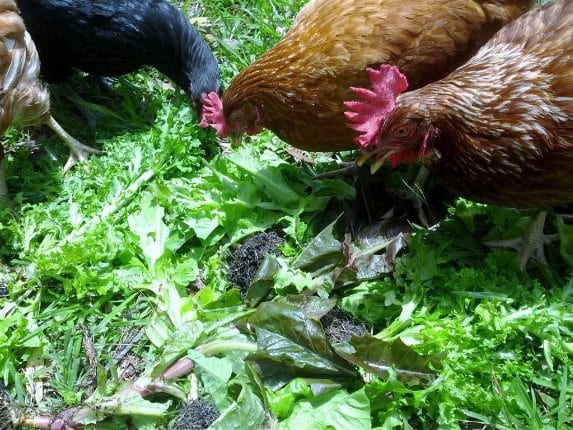
Conclusion
For a simple vegetable, lettuce sure gave me a lot to write about and I could go on for hours more boring the socks off everyone but I think my point has been made. That is, lettuce may be simple but without it the world wouldn't be the same so next time you scrape that garnish to the side of the plate or order that side-salad stop for a moment and give thanks to this delightful plant.
Let-us have some fun – why not tell us your opinion on what the world would be like without lettuce? Write your answer in the comments section below (no email is required) and we'll see who comes up with the most original comment.
Look, and see the Earth through her eyes
Mark Valencia – Editor SSM
(Image below) Fresh lettuce in the sink ready for washing and then the table

